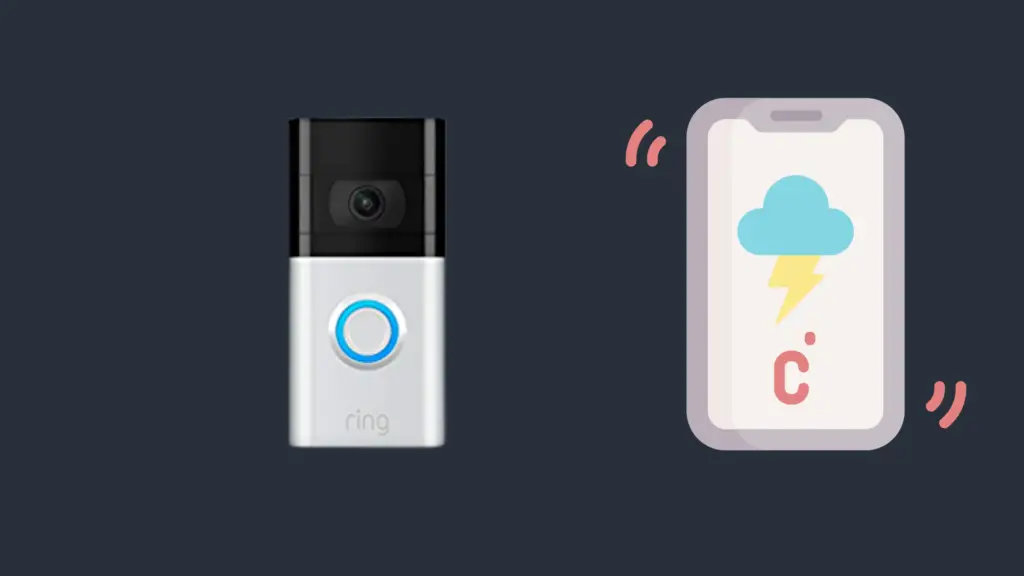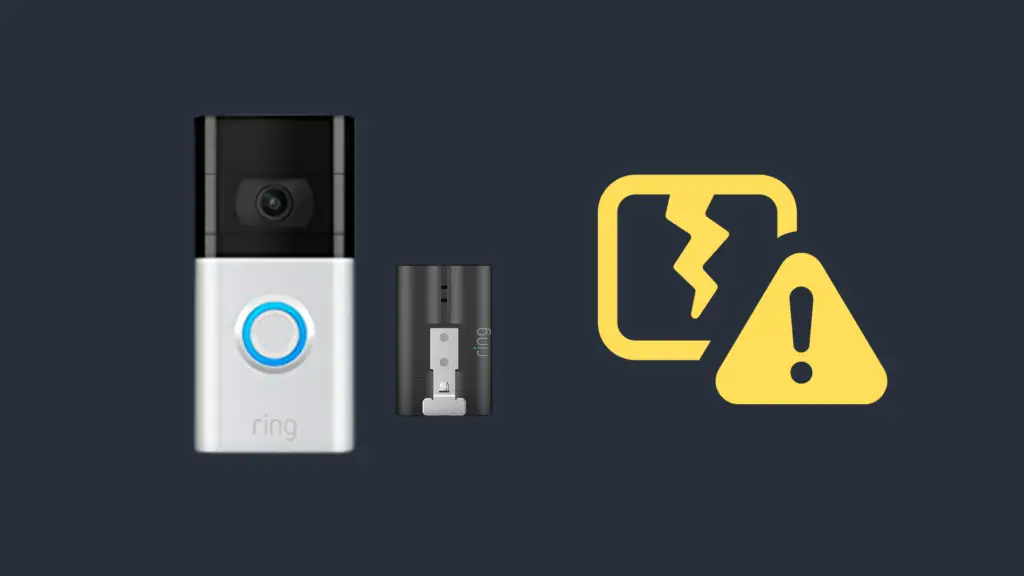Can Ring Doorbell Get Wet? (This is what happens if they do)

With a Ring doorbell, you can always hear and see what’s going on at your front door in real time, rain or shine. But what happens when the bad weather starts to take a toll on your Ring, and it gets wet? How can you keep your doorbell operating in bad weather? Read on for some tips.
Can Your Ring Doorbell Get Wet?
Just like any other piece of electronics, it’s not a good idea to expose your Ring doorbell to excessive moisture. Though the doorbell itself is weather-resistant, the battery compartment is not. So, if you live in an area with severe weather conditions, it’s important to take measures to protect your doorbell from the elements.
Even if it’s water-resistant, this doesn’t mean it’s completely waterproof. Exposing the doorbell to too much water can cause damage to the device. If your Ring equipment does get wet, it’s important to dry it off as soon as possible to prevent any further damage.
How to Keep Your Ring Doorbell Operating in Bad Weather
There are a few things you can do to make sure your Ring doorbell continues to work properly, even in bad weather. Here are a few tips:
1. Cover the battery compartment
The battery compartment is the most vulnerable part of your Ring doorbell, so it’s important to keep it covered when the weather is bad. You can buy a weather-resistant cover or simply tape a plastic bag over it. It’s important to note that if your Ring Doorbell is exposed to enough water, it can lead to corrosion on the battery terminal.
To avoid any moisture getting into the battery compartment, it’s best to remove the batteries and store them in a dry place when you know bad weather is on the way. And if you live in an area with severe weather conditions, it’s a good idea to keep a spare set of batteries on hand, just in case.
2. Move the doorbell to a sheltered location
If possible, it’s a good idea to move your Ring doorbell to a sheltered location when bad weather is on the way. This could be under an awning or porch, or even inside your house if you have an indoor chime.
While it’s not ideal, you can also try to position the doorbell in a way that it’s less exposed to the elements. For example, if your door is on the north side of your house, try to position the doorbell on the south side.
3. Keep an eye on the forecast

Be sure to keep an eye on the weather forecast so you know when bad weather is on the way. This will give you time to take measures to protect your doorbell, like covering the battery compartment or moving the doorbell to a sheltered location.
You can also sign up for weather alerts from your local news station or the National Weather Service. That way, you’ll be sure to get a heads up when severe weather is heading your way.
4. Try Doorbell Weather-Blocking Mounts
There are a few different types of doorbell weather-blocking mounts available on the market. These can be used to protect your doorbell from the elements, and some even allow you to adjust the angle of the camera to get a better view.
This is a great option if you live in an area with severe weather conditions, or if you just want an extra layer of protection. And it’s an especially good idea if you plan on leaving your doorbell mounted for an extended period of time.
5. Use Silicone Grease
One way to keep moisture out of your doorbell is to apply a thin layer of silicone grease around the edges of the battery compartment. This will create a barrier that will help keep moisture out.
You can find silicone grease at most hardware stores, or you can order it online. Just be sure to get the food-grade variety, as this is safe for use with electronics.
6. Check for Damage

After a severe storm, check your doorbell for any damage. If you see any corrosion, it’s best to replace the doorbell. And if the battery compartment is wet, replace the batteries as soon as possible.
Even if your doorbell appears to be working properly, it’s a good idea to test it out before relying on it. Try ringing the doorbell from a few different angles to make sure the camera is working properly. And if you have an indoor chime, test that as well.
By following these tips, you can help ensure that your Ring doorbell continues to work properly, even in bad weather.
What If Your Ring Doorbell Gets Wet?
If your Ring doorbell does get wet, here’s what you should do:
- Disconnect the battery immediately. When you know your doorbell has been exposed to water, disconnect it to prevent any further damage.
- Remove the faceplate and front cover. Once the battery is disconnected, you can remove the faceplate and front cover to access the doorbell’s internal components.
- Inspect the doorbell for water damage. As you inspect the doorbell, look for any signs of water damage. This can include corrosion, discoloration, or even mold growth. If you see any water damage, it’s best to replace the doorbell.
- Let the doorbell air dry. In most cases, drying the doorbell will suffice. However, if there’s significant water damage, it’s best to replace the doorbell.
- Test the doorbell before using it. After the doorbell is dry, you can reconnect the battery and test the doorbell to make sure it’s working properly. If the doorbell doesn’t seem to be working properly, replace it.
- Take measures to prevent future water damage. As soon as your doorbell is dry and working properly, install a weather-resistant mount or apply silicone grease around the edges of the battery compartment to help keep water out of the internal components.
Final Thoughts
You can use a Ring doorbell in bad weather, but there are some things you need to do to protect it from the elements. And if your doorbell does get wet, be sure to take measures to dry it out and prevent further damage. The most important thing is to test the doorbell before relying on it, as water damage can cause it to stop working properly.






